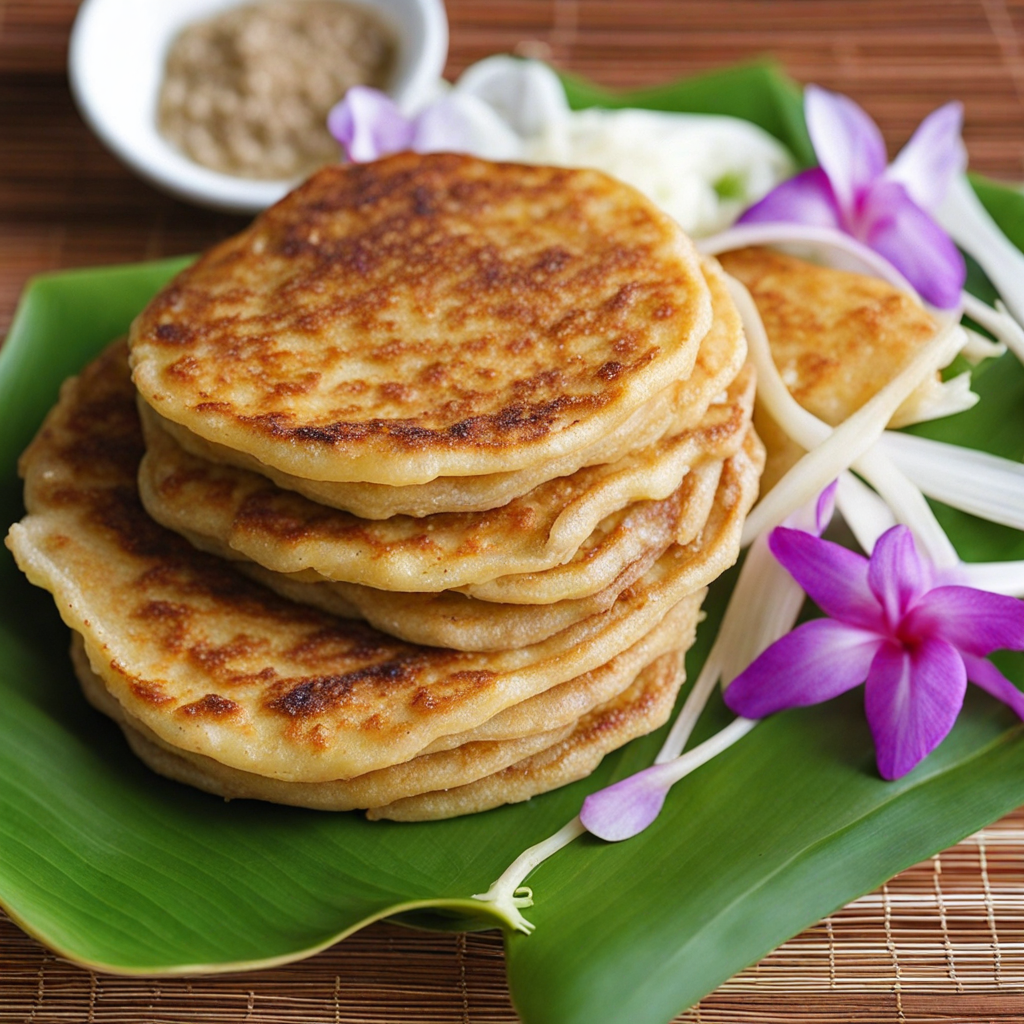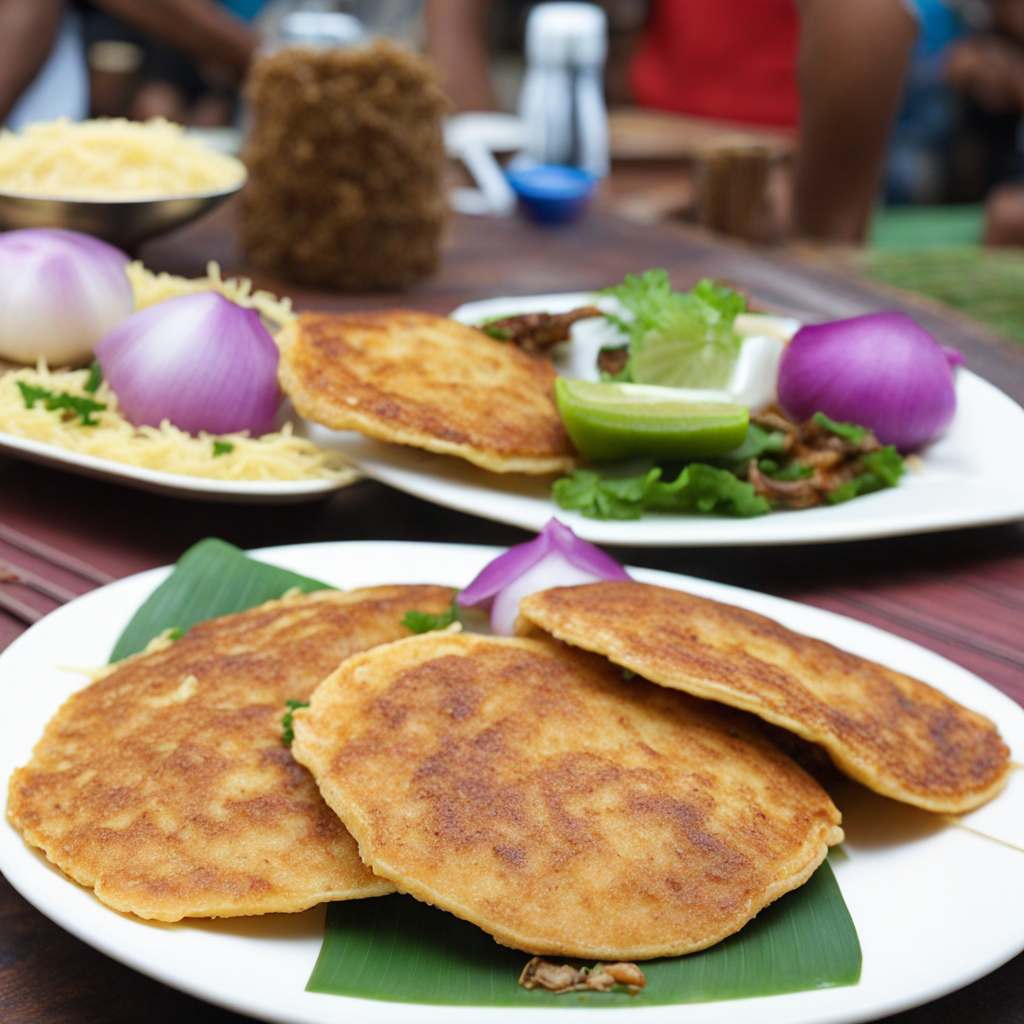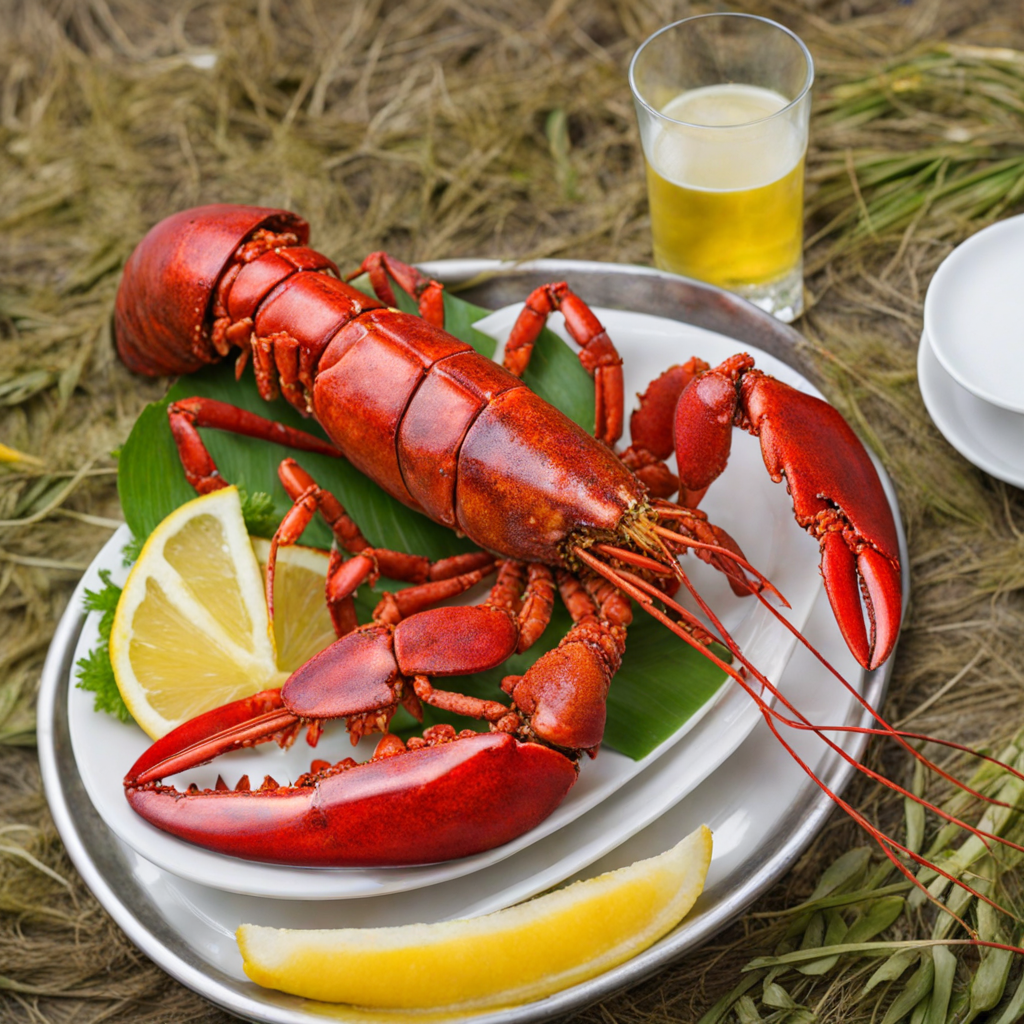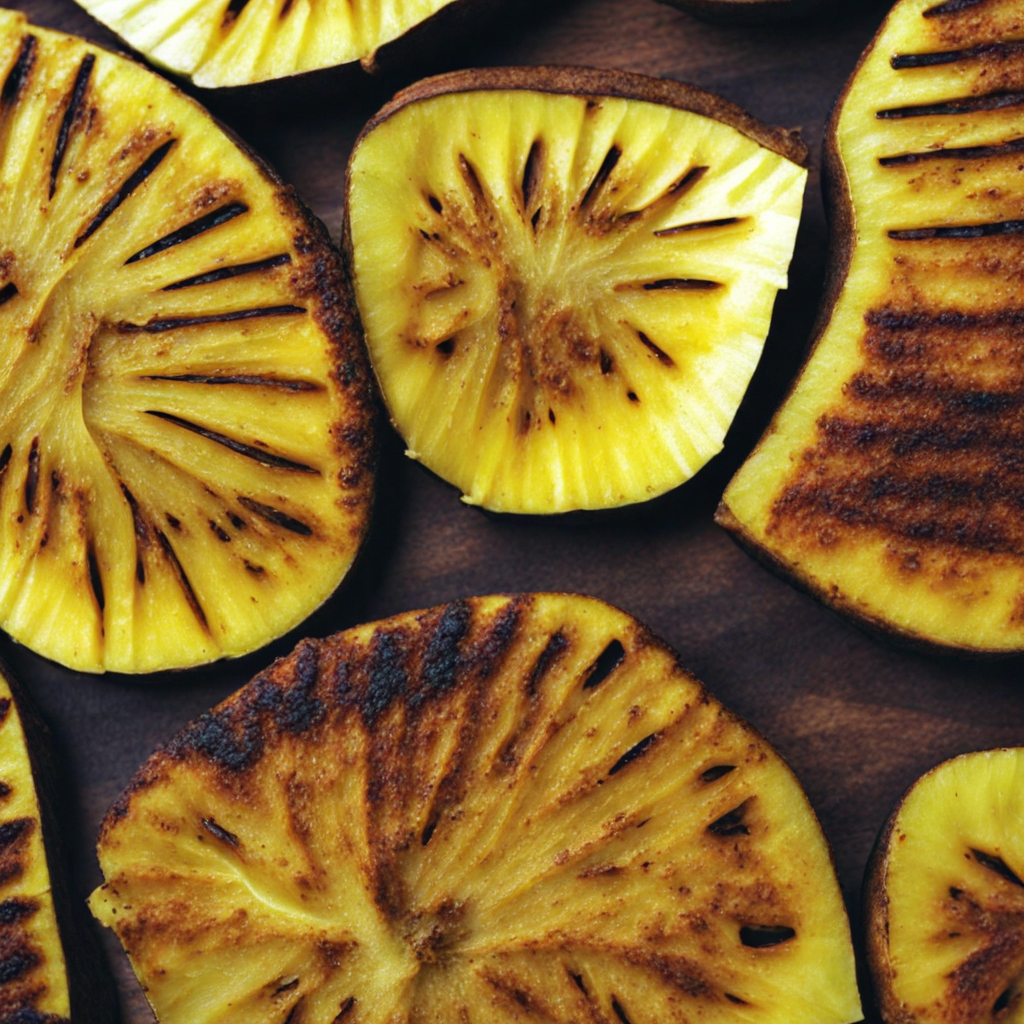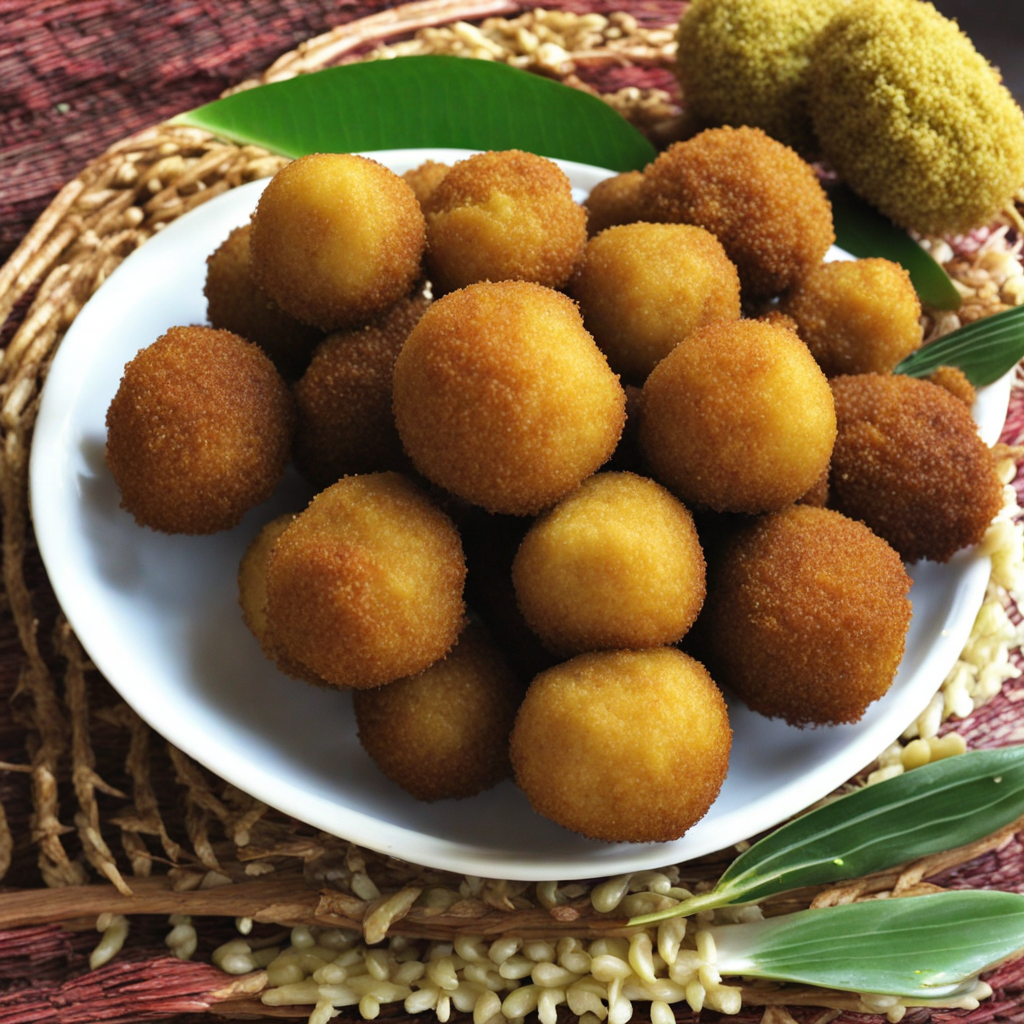Taro Pancakes
Taro pancakes are a delightful and unique dish that beautifully encapsulates the flavors of Tuvalu, an island nation in the Pacific. These pancakes are made using taro root, a starchy and subtly sweet tuber that has been a staple in the diet of Pacific Islanders for generations. The taro is typically cooked until tender, then mashed and mixed with flour, coconut milk, and a hint of sugar to create a rich, vibrant batter. The natural purple hue of the taro adds a visually appealing twist, making these pancakes not just tasty but also a feast for the eyes. The cooking process involves frying the batter on a hot griddle, resulting in pancakes that are crispy on the outside while remaining soft and fluffy on the inside. The aroma that fills the kitchen while they cook is irresistible, with hints of coconut that evoke the essence of island life. Traditionally, these pancakes are served warm, often accompanied by a drizzle of honey or a dollop of coconut cream, enhancing the tropical flavors and adding a luscious touch to each bite. One of the most appealing aspects of taro pancakes is their versatility. They can be enjoyed as a sweet breakfast treat or a savory snack, depending on the ingredients mixed into the batter. Adding spices such as cinnamon or nutmeg can elevate the sweetness, while incorporating herbs or green onions can give it a savory twist. Whether enjoyed on their own or as part of a larger meal, taro pancakes offer a delightful experience that transports your taste buds to the serene shores of Tuvalu.
How It Became This Dish
The History of Panikeke Talo: A Sweet Slice of Tuvalu’s Culinary Heritage #### Origins of Panikeke Talo Panikeke Talo, a traditional Tuvaluan delicacy, epitomizes the vibrant tapestry of culture and history that characterizes this small island nation in the Pacific Ocean. Tuvalu, comprising nine small islands, is known for its rich cultural heritage and the close-knit relationships among its people. The origins of Panikeke Talo can be traced back to the traditional practices of the islanders, where the use of locally available ingredients was paramount. The basic components of Panikeke Talo are simple yet significant: ripe bananas (often the “talo” variety, which are known for their sweetness), flour, sugar, and coconut milk. The bananas, a staple food in Tuvalu, have been cultivated in the region for centuries and are deeply integrated into the daily diet and cultural practices of the Tuvaluan people. The combination of these ingredients results in a fried sweet treat that is beloved across the islands. The name “Panikeke” derives from the word "pancake," reflecting the influence of European culinary practices that began to permeate Tuvaluan kitchens in the 19th and 20th centuries. However, Panikeke Talo is distinctly Tuvaluan, incorporating local flavors and the resourcefulness of the islanders who have adapted their cooking to utilize indigenous ingredients. #### Cultural Significance Panikeke Talo is more than just a delicious snack; it embodies the spirit of Tuvaluan hospitality and community. Food in Tuvalu is central to social gatherings, celebrations, and rituals. Preparing Panikeke Talo is often a communal activity, bringing families and friends together, particularly during festive occasions such as weddings, birthdays, and national celebrations. The act of making Panikeke Talo can be a joyous and collaborative effort, involving the entire family. Traditionally, women would gather to prepare the ingredients, share stories, and pass down the recipe through generations. This practice not only strengthens familial bonds but also serves as a means of cultural transmission, ensuring that the customs and culinary knowledge of Tuvalu are preserved. In addition, Panikeke Talo holds a place of honor in cultural celebrations and feasts. Its sweet flavor and satisfying texture make it a favored treat among both children and adults. The dish symbolizes abundance and the sharing of resources, reflecting the values of generosity and community that are integral to Tuvaluan society. #### Development Over Time As Tuvalu navigated through the tides of globalization and modernization in the late 20th and early 21st centuries, the preparation and consumption of Panikeke Talo evolved. With the influx of Western influences, new ingredients and methods began to trickle into Tuvaluan kitchens. While the traditional recipe remains cherished, variations have emerged, reflecting both the adaptability of the dish and the changing palates of the people. Modern culinary experimentation has seen the incorporation of different types of flour, such as whole wheat, and the use of alternative sweeteners, like honey or agave syrup, in place of sugar. Some cooks have even introduced flavors such as cinnamon or vanilla to enhance the profile of Panikeke Talo. These adaptations showcase the evolving nature of Tuvaluan cuisine, demonstrating how traditional dishes can be reinterpreted while still honoring their roots. Moreover, the diaspora of Tuvaluans around the world has contributed to the dissemination of Panikeke Talo beyond the shores of the islands. As Tuvaluans migrate to countries such as New Zealand, Australia, and the United States, they carry with them their culinary traditions, including the beloved Panikeke Talo. This globalization of food culture allows for the introduction of Tuvaluan cuisine to diverse communities, fostering a greater appreciation for the islands' unique culinary heritage. In recent years, there has been a renewed interest in traditional foods and sustainable cooking practices. Efforts to promote local ingredients and traditional recipes have gained momentum, particularly as awareness of food sovereignty and environmental issues increases. Tuvaluans are increasingly revisiting their culinary traditions, celebrating the flavors of their homeland while also adapting to contemporary tastes. #### Conclusion Panikeke Talo stands as a testament to the resilience and adaptability of Tuvaluan culture. Rooted in the history and traditions of the islands, this delightful treat not only tantalizes the taste buds but also encapsulates the values of community, family, and cultural identity. As Tuvalu navigates the complexities of modern life, the enduring popularity of Panikeke Talo serves as a reminder of the importance of preserving culinary heritage amid change. This dish, with its humble ingredients and rich history, is a sweet reflection of Tuvalu's past and present. It invites both locals and visitors alike to indulge in a taste of the islands while fostering a connection to the traditions that have shaped the culinary landscape of Tuvalu for generations. Through Panikeke Talo, the spirit of Tuvalu lives on, embodying the joys of sharing and the importance of community in a rapidly changing world.
You may like
Discover local flavors from Tuvalu


